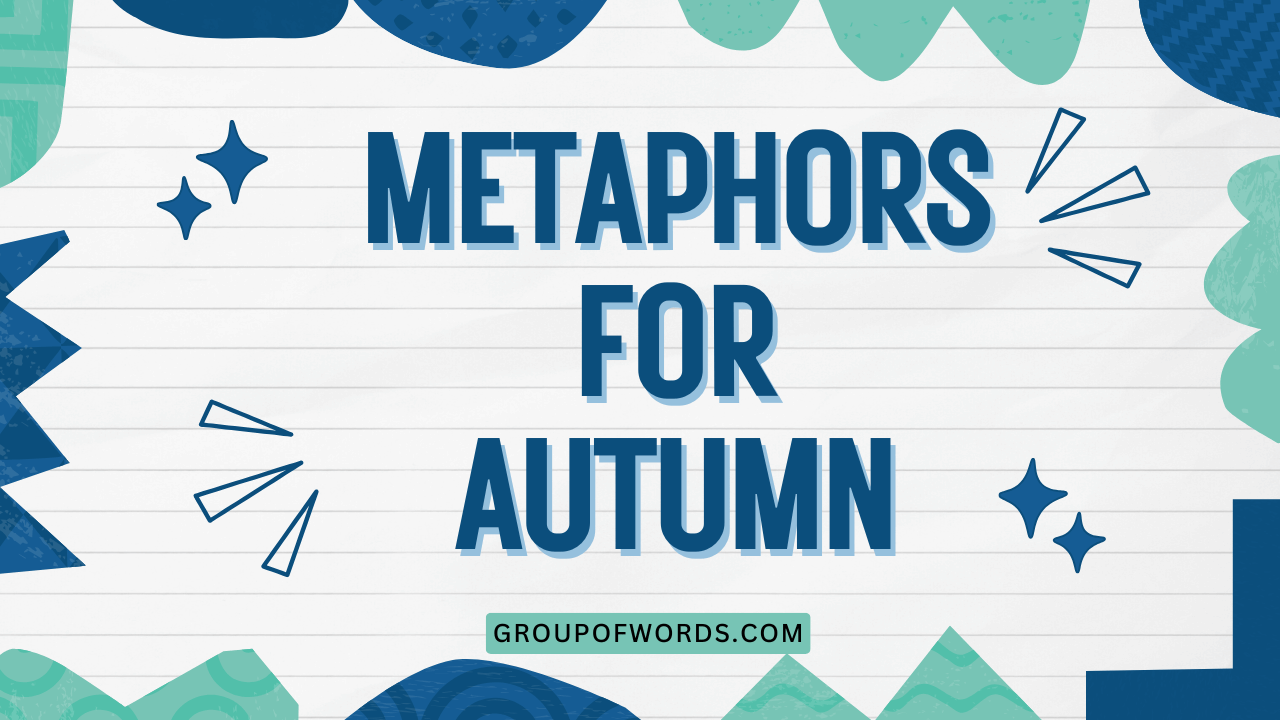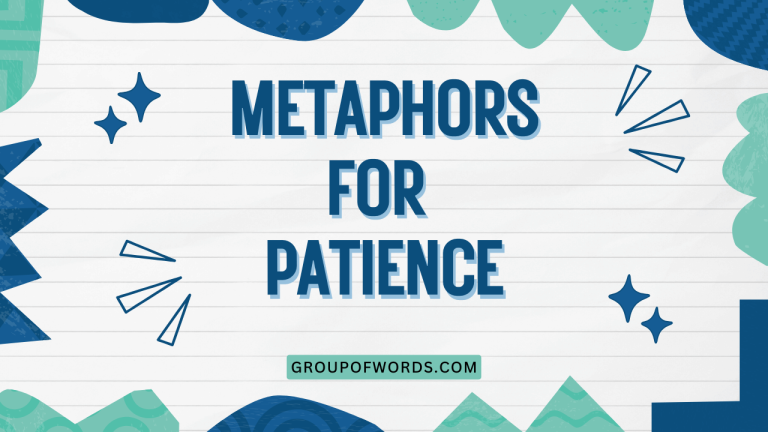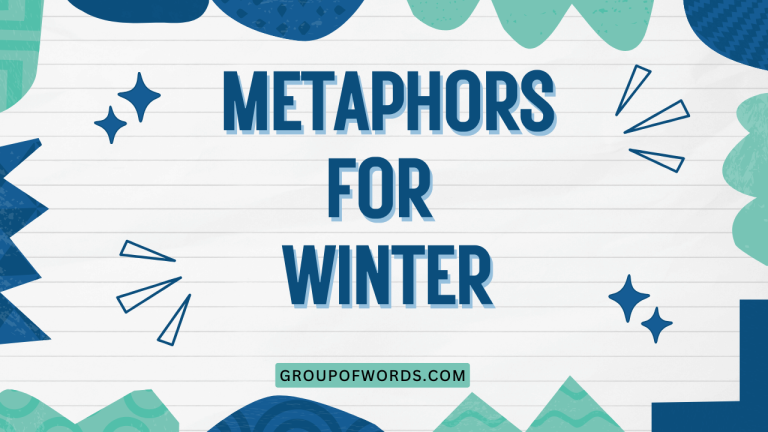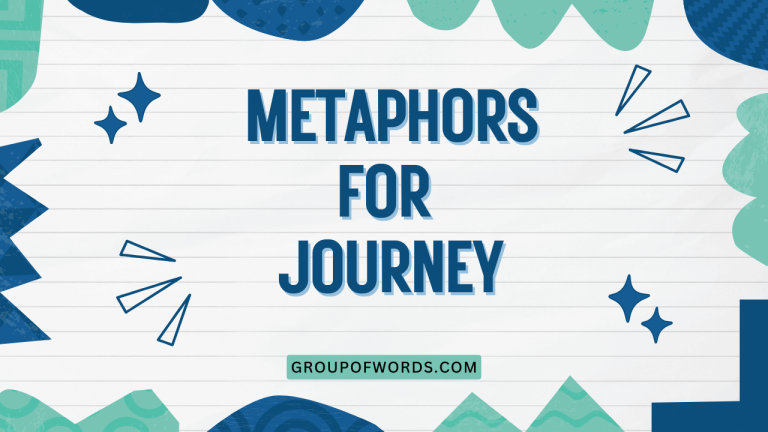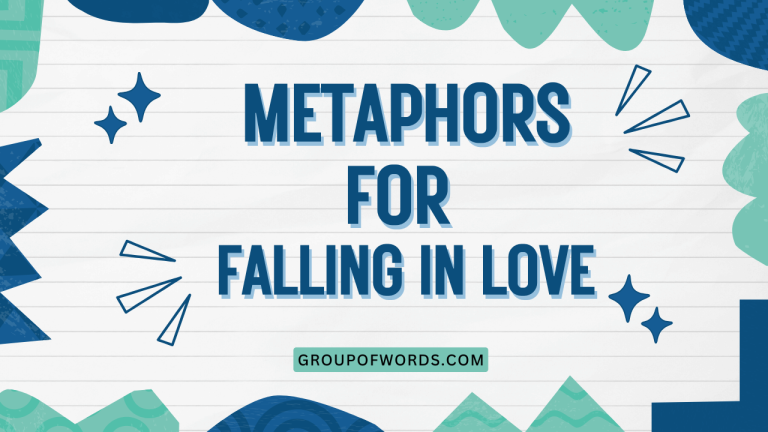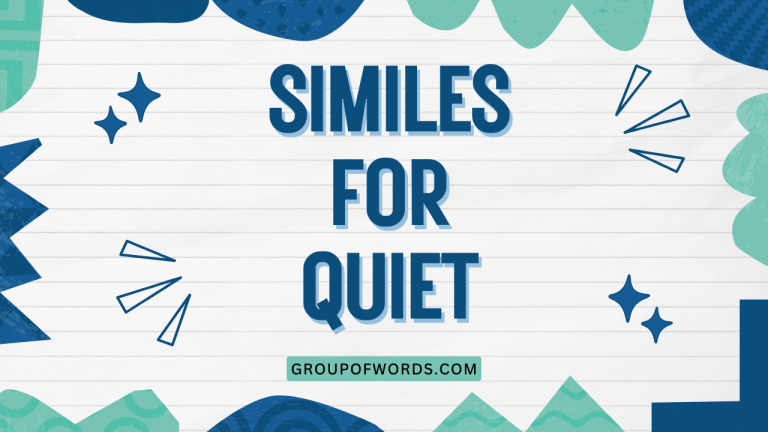Autumn Metaphors: A Guide to Figurative Language
Autumn, with its vibrant colors and crisp air, is a season ripe for metaphorical expression. Understanding metaphors related to autumn not only enriches your vocabulary but also enhances your ability to interpret and create vivid imagery in both writing and speech.
This article explores the various ways autumn is used metaphorically in English, delving into its symbolism and providing numerous examples to illustrate its usage. Whether you’re an English language learner, a student of literature, or simply someone who appreciates the beauty of language, this guide will deepen your understanding of autumn metaphors and their impact.
Table of Contents
- Introduction
- Definition of Metaphor
- Autumn as a Metaphor
- Structural Breakdown
- Types of Autumn Metaphors
- Examples of Autumn Metaphors
- Usage Rules
- Common Mistakes
- Practice Exercises
- Advanced Topics
- FAQ
- Conclusion
Introduction
Metaphors are powerful tools in the English language, allowing us to draw comparisons between seemingly unrelated things to create vivid imagery and deeper meaning. Autumn, with its distinct characteristics, provides a rich source of metaphorical inspiration.
This article will help you understand how autumn is used metaphorically to represent various concepts such as aging, transition, and fulfillment. By exploring these metaphors, you’ll gain a better appreciation for the nuances of English grammar and literature, and improve your ability to express yourself creatively.
Definition of Metaphor
A metaphor is a figure of speech that directly compares two unrelated things, stating that one thing *is* another, to suggest a likeness or analogy between them. Unlike similes, which use words like “like” or “as” to make comparisons, metaphors imply the comparison directly. Metaphors are essential for adding depth and color to language, enabling writers and speakers to convey complex ideas in a concise and impactful way. They function by transferring qualities or characteristics from one entity to another, creating a new understanding or perspective.
Metaphors can be classified based on their structure and function. Standard metaphors are the most common, directly stating the comparison. Implied metaphors suggest the comparison without explicitly stating it. Extended metaphors develop the comparison over several lines or throughout an entire work. Understanding these classifications helps in identifying and interpreting metaphors effectively.
Autumn as a Metaphor
Autumn, with its characteristic changes in nature, serves as a powerful and versatile metaphor in literature, poetry, and everyday language. The season’s association with falling leaves, cooler temperatures, and the harvest makes it particularly suitable for representing themes of aging, decline, transition, and abundance.
When used metaphorically, autumn can evoke a range of emotions, from nostalgia and melancholy to gratitude and hope. Its symbolic richness allows for multifaceted interpretations, making it a favorite among writers and speakers seeking to add depth and resonance to their expression.
Structural Breakdown
Understanding the structure of autumn metaphors involves recognizing the elements being compared. Typically, the tenor (the subject being described) is something abstract, such as a person’s life or a stage in a process. The vehicle (the thing it’s being compared to) is autumn itself, with its specific attributes like falling leaves or harvest time. The ground is the shared characteristics between the tenor and the vehicle – for example, the decline of vitality in both aging and the dying of the year.
The effectiveness of an autumn metaphor relies on the clarity and relevance of these elements. A well-constructed metaphor creates a strong connection between the tenor and vehicle, allowing the reader or listener to easily grasp the intended meaning.
Conversely, a poorly constructed metaphor can be confusing or ineffective. Recognizing these structural elements enhances your ability to both create and interpret metaphors effectively.
Types of Autumn Metaphors
Autumn metaphors can be broadly categorized based on the specific aspects of the season they emphasize. These categories include autumn as aging and decline, autumn as transition and change, autumn as harvest and reward, and autumn as beauty and reflection.
Each category offers a unique perspective on the metaphorical potential of autumn.
Autumn as Aging and Decline
Perhaps the most common metaphorical association of autumn is with aging and decline. The falling leaves symbolize the loss of vitality, the shortening days represent the diminishing of life’s opportunities, and the cooler temperatures mirror the slowing down of physical processes.
This type of metaphor often evokes a sense of nostalgia, reflection, and acceptance of the inevitable passage of time.
Autumn as Transition and Change
Autumn also serves as a metaphor for transition and change, representing the shift from one state to another. The season marks the bridge between the vibrancy of summer and the dormancy of winter, symbolizing periods of transformation, adaptation, and letting go.
This type of metaphor often implies a sense of anticipation, uncertainty, and the potential for renewal.
Autumn as Harvest and Reward
In contrast to its association with decline, autumn can also symbolize harvest and reward. The season represents the culmination of efforts, the reaping of benefits, and the celebration of accomplishments.
This type of metaphor often evokes a sense of gratitude, satisfaction, and the recognition of hard work paying off.
Autumn as Beauty and Reflection
Finally, autumn can be used as a metaphor for beauty and reflection. The season’s vibrant colors, crisp air, and serene landscapes offer a visual and sensory feast, inspiring contemplation and appreciation.
This type of metaphor often evokes a sense of peace, wonder, and the recognition of the beauty inherent in impermanence.
Examples of Autumn Metaphors
The following tables provide examples of autumn metaphors categorized by their primary association: aging and decline, transition and change, harvest and reward, and beauty and reflection. Each example illustrates how autumn’s characteristics are used to represent different aspects of life and experience.
Table 1: Autumn as Aging and Decline
This table contains metaphors where autumn is used to symbolize the process of aging and the eventual decline that comes with it. These examples often highlight the loss of vitality and the passage of time.
| Metaphor | Explanation |
|---|---|
| “His career was in its autumn years.” | His career was nearing its end, declining in prominence and activity. |
| “She felt the autumn of her life approaching.” | She sensed that she was getting older and experiencing a decline in her physical and mental capabilities. |
| “The autumn of the empire had begun.” | The empire was starting to decline, losing its power and influence. |
| “His health was in its autumn, slowly fading away.” | His health was deteriorating, similar to the gradual fading of leaves in autumn. |
| “The relationship entered its autumn, growing cold and distant.” | The relationship was declining, losing its warmth and intimacy. |
| “The project was in its autumn phase, winding down to completion.” | The project was nearing its end, with fewer tasks and less activity. |
| “The old house stood in its autumn glory, weathered and worn.” | The house, like an aging person, showed signs of wear and tear, but still retained a certain charm. |
| “His memory was like an autumn leaf, fragile and fading.” | His memory was becoming weaker and less reliable, like a leaf losing its color and strength. |
| “The city was experiencing its autumn of innovation, with fewer new ideas emerging.” | The city’s innovative spirit was declining, with a decrease in new developments. |
| “Her spirit was in its autumn, weary from years of hardship.” | Her spirit was tired and weakened by the challenges she had faced throughout her life. |
| “Their friendship was in its autumn, the vibrant colors of youth replaced by a quiet understanding.” | The intensity of their youthful friendship had faded, replaced by a more mature and subdued connection. |
| “The artist’s creativity was in its autumn, producing fewer and less inspired works.” | The artist’s creative output had declined, resulting in less frequent and less impressive pieces. |
| “The garden was in its autumn slumber, preparing for the long winter ahead.” | The garden was nearing the end of its growing season, entering a period of dormancy. |
| “The athlete’s career was in its autumn, his skills diminishing with age.” | The athlete’s performance was declining due to the effects of aging. |
| “The company was in its autumn, struggling to adapt to changing market conditions.” | The company was facing difficulties and declining due to its inability to adjust to new circumstances. |
| “The book was in its autumn, nearing the final chapters and the resolution of its story.” | The book was nearing its end, with the plot lines converging and the conclusion approaching. |
| “His voice was in its autumn, losing its strength and clarity.” | His voice was becoming weaker and less distinct, a sign of aging. |
| “The old traditions were in their autumn, slowly fading away as new customs emerged.” | The traditional practices were declining in popularity and importance, being replaced by modern customs. |
| “The town was in its autumn years, with many of its younger residents moving away.” | The town was experiencing a decline in population, particularly among younger people, leading to a sense of aging and stagnation. |
| “Her beauty was in its autumn, still radiant but tinged with the wisdom of experience.” | Her physical attractiveness was still present but tempered by the signs of aging and the depth of her life experiences. |
| “The era was in its autumn, its ideals and values losing their relevance.” | The prevailing ideas and principles of the time were becoming outdated and less influential. |
| “The politician’s influence was in its autumn, his popularity waning among the voters.” | The politician’s power and support were declining as his popularity decreased. |
| “The building was in its autumn, its structural integrity weakening over time.” | The building’s physical condition was deteriorating, making it less stable and secure. |
Table 2: Autumn as Transition and Change
This table presents metaphors that use autumn to represent periods of transition and change. These examples often highlight the shift from one state to another and the uncertainty that comes with it.
| Metaphor | Explanation |
|---|---|
| “The company was entering its autumn of restructuring.” | The company was undergoing significant changes in its organization and operations. |
| “She saw autumn as a time of transition, letting go of the old to make way for the new.” | She viewed autumn as a period of releasing past habits and embracing new opportunities. |
| “The project was in its autumn phase, transitioning from planning to execution.” | The project was moving from the initial planning stages to the implementation phase. |
| “His life was in its autumn, a time of reflection and preparation for what’s to come.” | He was at a stage in his life where he was contemplating the past and preparing for the future. |
| “The relationship was in its autumn, moving from passionate love to comfortable companionship.” | The relationship was evolving from intense romance to a more stable and familiar bond. |
| “The industry was experiencing its autumn, adapting to new technologies and market trends.” | The industry was undergoing significant changes to keep up with technological advancements and market demands. |
| “The political landscape was in its autumn, shifting alliances and changing power dynamics.” | The political situation was changing rapidly, with new partnerships forming and the balance of power shifting. |
| “The artist was in his autumn period, experimenting with new styles and techniques.” | The artist was exploring different artistic approaches and methods. |
| “The city was in its autumn of renewal, undergoing significant urban redevelopment.” | The city was being revitalized through major construction and renovation projects. |
| “Her career was in its autumn, transitioning from a leadership role to a mentorship position.” | She was moving from a position of authority to one where she guided and supported others. |
| “The school year was in its autumn, preparing students for the final exams.” | The school year was nearing its end, with students focusing on reviewing and preparing for their final assessments. |
| “The festival was in its autumn, transitioning from outdoor events to indoor celebrations.” | The festival was shifting from activities held outside to events taking place indoors. |
| “The fashion industry was in its autumn, showcasing new collections for the upcoming season.” | The fashion world was unveiling its latest designs for the next season. |
| “The project team was in its autumn, transitioning from development to testing.” | The project team was moving from the creation phase to the testing and evaluation phase. |
| “The neighborhood was in its autumn, transforming from a quiet residential area to a bustling urban center.” | The character of the neighborhood was changing as it became more developed and active. |
| “The musician was in his autumn, transitioning from performing live to recording in the studio.” | The musician was shifting from giving live concerts to creating music in a studio setting. |
| “The website was in its autumn, transitioning from a static platform to an interactive community.” | The website was evolving from a basic information source to a platform where users could interact with each other. |
| “The company’s strategy was in its autumn, transitioning from a product-focused approach to a customer-centric model.” | The company was changing its focus from creating products to prioritizing customer needs and satisfaction. |
| “The research project was in its autumn, transitioning from data collection to analysis and interpretation.” | The research project was moving from gathering information to examining and understanding the findings. |
| “The athlete’s training regime was in its autumn, transitioning from intense workouts to recovery and maintenance.” | The athlete was shifting from high-intensity training to a focus on resting and maintaining their physical condition. |
| “The software development was in its autumn, moving from coding to debugging and refinement.” | The software creation process was shifting from writing code to identifying and fixing errors. |
| “The city’s infrastructure was in its autumn, transitioning from old systems to modern solutions.” | The city’s basic services and facilities were being updated and modernized. |
| “The artist’s style was in its autumn, transitioning from realism to abstract expressionism.” | The artist’s creative approach was evolving from representing things as they appear to expressing emotions and ideas in a non-representational way. |
Table 3: Autumn as Harvest and Reward
This table showcases metaphors where autumn is used to represent the idea of harvest and reward. These examples often emphasize the culmination of efforts and the satisfaction of reaping the benefits of hard work.
| Metaphor | Explanation |
|---|---|
| “After years of hard work, she was finally enjoying the autumn of her success.” | She was reaping the rewards of her long-term efforts and achieving significant success. |
| “The project reached its autumn, delivering significant results and positive outcomes.” | The project was completed successfully, producing valuable results and benefits. |
| “He was in the autumn of his career, enjoying the fruits of his labor.” | He was in the later stages of his career, benefiting from the hard work he had put in. |
| “The company experienced its autumn, reaping record profits after a successful year.” | The company had a highly profitable year, achieving significant financial success. |
| “The community was in its autumn, celebrating the harvest and abundance of the land.” | The community was celebrating a successful harvest and the plentiful resources it provided. |
| “The student was in the autumn of their studies, receiving accolades for their academic achievements.” | The student was being recognized and praised for their success in their studies. |
| “The team was in its autumn, celebrating their championship victory after a season of hard work.” | The team was celebrating their win after dedicating themselves to training and competition. |
| “The artist was in the autumn of their career, receiving recognition for their lifetime of work.” | The artist was being honored for their contributions to the art world over many years. |
| “The city was in its autumn, enjoying the benefits of its sustainable development initiatives.” | The city was experiencing the positive effects of its efforts to promote environmentally friendly development. |
| “The organization was in its autumn, reaping the rewards of its innovative strategies.” | The organization was benefiting from the success of its new and creative approaches. |
| “The garden was in its autumn, overflowing with ripe fruits and vegetables.” | The garden was producing a plentiful harvest of mature and ready-to-eat produce. |
| “The author was in the autumn of their writing career, receiving critical acclaim for their latest novel.” | The author was being praised by critics for the quality and impact of their most recent book. |
| “The non-profit organization was in its autumn, seeing the positive impact of its programs on the community.” | The organization was witnessing the beneficial effects of its activities on the people it served. |
| “The scientist was in the autumn of their research, making groundbreaking discoveries in their field.” | The scientist was making significant and innovative contributions to their area of study. |
| “The entrepreneur was in the autumn of their business venture, seeing their company thrive and expand.” | The entrepreneur’s business was flourishing and growing successfully. |
| “The musician was in the autumn of their performing career, receiving standing ovations at every concert.” | The musician was being enthusiastically appreciated by audiences at their performances. |
| “The teacher was in the autumn of their career, watching their former students succeed in various fields.” | The teacher was observing the achievements of their past students in different professions. |
| “The athlete was in the autumn of their athletic career, winning medals at international competitions.” | The athlete was achieving success and recognition in international sports events. |
| “The politician was in the autumn of their political career, implementing policies that benefited the nation.” | The politician was enacting measures that had a positive impact on the country. |
| “The activist was in the autumn of their advocacy work, seeing significant progress in their cause.” | The activist was witnessing meaningful advancements in the issues they were supporting. |
| “The farmer was in the autumn of their farming year, harvesting a bumper crop of grains.” | The farmer was collecting a large and abundant harvest of grains. |
| “The investor was in the autumn of their investment strategy, earning substantial returns.” | The investor was making significant profits from their investment decisions. |
| “The developer was in the autumn of their real estate project, selling out all the units.” | The developer had successfully sold all the properties in their project. |
Table 4: Autumn as Beauty and Reflection
This table provides metaphors that use autumn to represent beauty and reflection. These examples often emphasize the aesthetic qualities of the season and the contemplative mood it inspires.
| Metaphor | Explanation |
|---|---|
| “She found solace in the autumn of the forest, surrounded by vibrant colors and crisp air.” | She found comfort and peace in the beauty of the autumn forest. |
| “Autumn was a time of reflection, a season to appreciate the beauty of impermanence.” | Autumn was a period for contemplation and recognizing the beauty in things that don’t last forever. |
| “The landscape was in its autumn splendor, a breathtaking display of reds, oranges, and yellows.” | The scenery was exceptionally beautiful in its autumn colors. |
| “He saw autumn as a metaphor for life, a beautiful but transient season.” | He viewed autumn as representing the fleeting nature of life’s beauty. |
| “The poem captured the autumn of the soul, a time of introspection and emotional depth.” | The poem evoked a sense of deep emotion and self-examination. |
| “The painting depicted the autumn of the countryside, a serene and picturesque scene.” | The painting showed a peaceful and visually appealing image of the autumn countryside. |
| “The music evoked the autumn of the heart, a feeling of nostalgia and longing.” | The music created a sense of sentimental yearning and remembrance. |
| “The dance was an expression of autumn’s grace, a flowing and elegant performance.” | The dance conveyed the elegance and beauty of the autumn season. |
| “The novel explored the autumn of relationships, a time of deepening connection and understanding.” | The novel examined the strengthening and deepening of relationships over time. |
| “The garden was in its autumn glory, a vibrant tapestry of colors and textures.” | The garden was exceptionally beautiful in its autumn colors and variety of plants. |
| “The sunset was the autumn of the day, a breathtaking finale of light and color.” | The sunset was the beautiful conclusion to the day, filled with vibrant hues. |
| “The memory was like an autumn afternoon, warm, golden, and filled with a sense of peace.” | The memory was pleasant, comforting, and filled with a feeling of tranquility. |
| “The walk through the woods was an autumn meditation, a time to connect with nature and oneself.” | Walking in the woods during autumn provided a reflective and peaceful experience. |
| “The festival was a celebration of autumn’s bounty, a time to appreciate the gifts of the earth.” | The festival celebrated the abundance of the autumn harvest and the natural resources it provided. |
| “The film captured the autumn of the year, a poignant and visually stunning portrayal of change.” | The film beautifully and emotionally depicted the changes that occur during autumn. |
| “The sculpture embodied the autumn of life, a representation of strength, wisdom, and resilience.” | The sculpture symbolized the qualities of strength, knowledge, and endurance that come with age. |
| “The poem celebrated the autumn of love, a time of quiet intimacy and deep connection.” | The poem praised the calm, close, and meaningful relationships that develop over time. |
| “The song evoked the autumn of the heart, a melody of reflection, gratitude, and acceptance.” | The song created a feeling of thoughtfulness, thankfulness, and acceptance of life’s changes. |
| “The story explored the autumn of a career, a time for mentorship, legacy, and giving back to the community.” | The story examined the later stages of a career, focusing on guiding others, leaving a positive impact, and contributing to society. |
| “The artwork depicted the autumn of a landscape, a harmonious blend of colors, textures, and light.” | The artwork showed a scene of natural beauty during autumn, with a balanced mix of colors, surfaces, and illumination. |
| “The dance performance was an autumn reverie, a dreamlike sequence of graceful movements and emotional expression.” | The dance show was a peaceful and imaginative performance, with elegant movements and emotional artistry. |
| “The play explored the autumn of a family, a time of reconciliation, understanding, and forgiveness.” | The play examined a family during a later stage in their life, focusing on resolving conflicts, gaining insights, and forgiving past wrongs. |
| “The garden design celebrated the autumn of nature, a careful arrangement of plants that highlighted the season’s unique beauty.” | The garden was designed to showcase the distinctive beauty of the autumn season, with a thoughtful selection and arrangement of plants. |
Usage Rules
When using autumn metaphors, it’s important to ensure that the comparison is clear and relevant. The connection between autumn and the subject being described should be easily understood.
Avoid clichés and strive for originality in your metaphorical expressions. Consider the context and audience when choosing an autumn metaphor to ensure that it resonates effectively.
Pay attention to the tone and emotional impact of your metaphor. Autumn can evoke a range of emotions, from nostalgia and melancholy to gratitude and hope.
Choose a metaphor that aligns with the desired mood and message. Overusing autumn metaphors can also diminish their impact, so use them sparingly and strategically.
Common Mistakes
One common mistake is using autumn metaphors that are too vague or generic. For example, saying “His life was like autumn” is not as effective as saying “His life was in its autumn, the leaves of his achievements slowly falling.” The latter provides a more specific and vivid image.
Another mistake is mixing metaphors, which can create confusion and weaken the overall effect.
It’s also important to avoid using autumn metaphors inappropriately. For instance, using an autumn metaphor to describe a joyful or celebratory occasion may be jarring or incongruous.
Ensure that the metaphorical association aligns with the context and subject matter. The table below shows some correct and incorrect examples:
| Incorrect | Correct | Explanation |
|---|---|---|
| “The party was like autumn.” | “The party was a summer’s day.” | Autumn is generally associated with decline, not celebration. |
| “His anger was an autumn breeze.” | “His anger was a winter storm.” | Anger is typically more intense than a gentle autumn breeze. |
| “Her love was an autumn harvest.” | “Her love was a spring bloom.” | Love is often associated with new beginnings and growth, not the end of a cycle. |
| “The project was an autumn success.” | “The project was a spring success.” | “Autumn success” is unclear; specify what aspect resembles autumn. Spring success is more easily understood as a fresh, new success. |
Practice Exercises
Test your understanding of autumn metaphors with these exercises. For each sentence, identify the metaphor and explain its meaning.
Then, rewrite the sentence using a simile instead of a metaphor.
Exercise 1
| Question | Answer |
|---|---|
| 1. Her career was in its autumn, the leaves of her achievements slowly falling. | Metaphor: “Her career was in its autumn.” Meaning: Her career was nearing its end. Simile: Her career was like autumn, with her achievements slowly declining like falling leaves. |
| 2. The relationship entered its autumn, growing cold and distant. | Metaphor: “The relationship entered its autumn.” Meaning: The relationship was declining. Simile: The relationship was like autumn, growing cold and distant like the weather. |
| 3. The city was experiencing its autumn of innovation, with fewer new ideas emerging. | Metaphor: “The city was experiencing its autumn of innovation.” Meaning: The city’s innovative spirit was declining. Simile: The city’s innovation was like autumn, with fewer new ideas emerging as the season progresses. |
| 4. After years of hard work, she was finally enjoying the autumn of her success. | Metaphor: “The autumn of her success.” Meaning: Reaping the rewards of her hard work. Simile: She was finally enjoying the rewards of her success, like a farmer enjoying the autumn harvest. |
| 5. The project reached its autumn, delivering significant results and positive outcomes. | Metaphor: “The project reached its autumn.” Meaning: The project was completed successfully. Simile: The project was like autumn, delivering significant results and positive outcomes like a bountiful harvest. |
| 6. She found solace in the autumn of the forest, surrounded by vibrant colors and crisp air. | Metaphor: “The autumn of the forest.” Meaning: The beauty and tranquility of the autumn forest. Simile: She found solace in the forest, which was like autumn with its vibrant colors and crisp air. |
| 7. Autumn was a time of reflection, a season to appreciate the beauty of impermanence. | Metaphor: “Autumn was a time of reflection.” Meaning: Autumn inspires contemplation and appreciation. Simile: Autumn was like a mirror, reflecting the beauty and impermanence of life. |
| 8. The old traditions were in their autumn, slowly fading away as new customs emerged. | Metaphor: “The old traditions were in their autumn.” Meaning: The traditions were declining. Simile: The old traditions were like autumn leaves, slowly fading away as new customs emerged. |
| 9. The company was entering its autumn of restructuring. | Metaphor: “The company was entering its autumn of restructuring.” Meaning: The company was undergoing significant changes. Simile: The company was like autumn, entering a period of significant restructuring. |
| 10. The landscape was in its autumn splendor, a breathtaking display of reds, oranges, and yellows. | Metaphor: “The landscape was in its autumn splendor.” Meaning: The landscape was exceptionally beautiful. Simile: The landscape was like autumn, a breathtaking display of reds, oranges, and yellows. |
Exercise 2
Rewrite the following sentences, incorporating an autumn metaphor to enhance their descriptive power. Be creative and consider the different aspects of autumn to add depth to your writing.
| Question | Answer |
|---|---|
| 1. The old house looked worn and tired. | The old house stood in its autumn years, weathered and worn by time. |
| 2. His memory was fading. | His memory was like an autumn leaf, fragile and fading with each passing day. |
| 3. The project was nearing completion. | The project was in its autumn phase, winding down to completion as the days grew shorter. |
| 4. She was reaping the rewards of her hard work. | After years of dedication, she was finally enjoying the autumn harvest of her labor. |
| 5. The city was celebrating a successful year. | The city was in its autumn, reveling in the abundance of a prosperous year. |
| 6. He found peace in the quiet forest. | He found solace in the autumn of the forest, where the leaves whispered secrets of tranquility. |
| 7. She reflected on the past. | She embraced the autumn of her thoughts, reflecting on memories painted in hues of gold and amber. |
| 8. The political landscape was changing. | The political landscape was in its autumn, with alliances shifting like leaves in the wind. |
| 9. The artist was experimenting with new techniques. | The artist was in his autumn period, experimenting with new techniques as the season inspired bold new directions. |
| 10. The company was undergoing significant changes. | The company was entering its autumn of restructuring, preparing for a winter of transformation. |
Advanced Topics
For advanced learners, exploring the use of autumn metaphors in literature can provide a deeper understanding of their symbolic significance. Analyze how famous poets and authors use autumn imagery to convey complex themes and emotions.
Research different cultural interpretations of autumn and how they influence metaphorical expressions. Consider the use of extended autumn metaphors in longer works
of literature, such as novels and plays, to understand how they contribute to the overall narrative and thematic development.
Additionally, examine the historical context in which autumn metaphors have been used. How have societal changes and cultural shifts influenced the way autumn is perceived and used metaphorically?
By engaging with these advanced topics, you can deepen your appreciation for the richness and complexity of autumn metaphors in literature and language.
FAQ
Here are some frequently asked questions about autumn metaphors:
What makes autumn a good source for metaphors?
Autumn’s distinct characteristics, such as the changing colors of leaves, the harvest season, and the transition to colder weather, make it a versatile and evocative source for metaphors. These elements can be easily associated with various aspects of life, such as aging, change, and achievement.
Can autumn metaphors be used in a positive context?
Yes, while autumn is often associated with decline, it can also be used to represent positive concepts such as harvest, reward, beauty, and reflection. The key is to focus on the specific aspects of autumn that align with the desired meaning.
How can I avoid clichés when using autumn metaphors?
To avoid clichés, strive for originality in your metaphorical expressions. Instead of relying on overused phrases, try to create fresh and vivid comparisons that capture the unique qualities of autumn.
Consider the specific context and audience to ensure that your metaphor resonates effectively.
Are autumn metaphors universally understood?
While the basic associations of autumn are generally understood across cultures, the specific nuances and interpretations may vary. It’s important to be aware of cultural differences and consider your audience when using autumn metaphors.
In some cultures, autumn may have different connotations than in Western societies.
How do extended autumn metaphors work?
Extended autumn metaphors involve developing a comparison between autumn and another concept over several lines or paragraphs. This allows for a more detailed and nuanced exploration of the metaphorical relationship.
Extended metaphors can be particularly effective in conveying complex themes and emotions.
Conclusion
Autumn metaphors offer a rich and evocative way to express complex ideas and emotions. By understanding the various types of autumn metaphors, their structural elements, and usage rules, you can enhance your ability to both interpret and create vivid imagery in your writing and speech.
Whether you’re exploring themes of aging, transition, harvest, or beauty, autumn provides a wealth of metaphorical possibilities. Embrace the beauty and versatility of autumn metaphors to enrich your language and deepen your understanding of the world around you.
As you continue to explore and experiment with these metaphors, you’ll discover new ways to express yourself creatively and connect with your audience on a deeper level.
